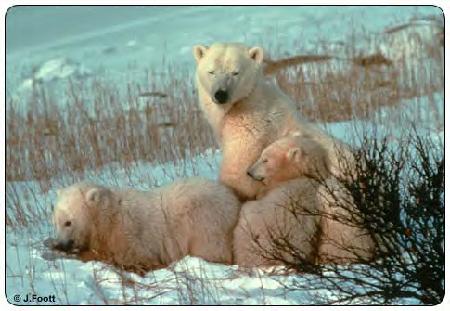|
|
Canku Ota |
|
|
(Many Paths) |
||
|
An Online Newsletter Celebrating Native America |
||
|
November 30, 2002 - Issue 75 |
||
|
|
||
|
Canada’s Inuit: Sharing Traditional Knowledge for Survival |
||
|
by DW
World
|
||
 In
the Arctic, the Inuit people have survived for centuries using their
knowledge of the environment. Now, their future could be threatened
by rising levels of contaminants in traditional food. In
the Arctic, the Inuit people have survived for centuries using their
knowledge of the environment. Now, their future could be threatened
by rising levels of contaminants in traditional food. The Inuit understand conservation. For centuries, they’ve used traditional knowledge about the arctic environment to ensure there’s enough food to hunt and fish, to sustain them through its harsh climate. Inusiq Nasaliq, a local elder from the village of Pangnirtung, 40 kilometres from the Artic Circle, says ‘country food’ has always been the basis of the Inuit food supply. "It’s very important, because it keeps them alive," he says. Ame Papatsie’s own father made sure his son learned the lesson, that you kill only what you can eat. As a child, Ame once caught a bird for fun. His father made him eat it. "I cried eating it," Ame says. "My parents didn’t want anything of it. Once I ate that, I understood I have to kill what I want to eat." Teaching for survival Ame Papatsie has returned to Pangnirtung after graduating from McGill University to teach at the town’s Arctic College. He gives seminars about Inuit traditions for Aboriginal college students as well as Canadians from southern universities. Ame says elders used to tell him that learning about the land would take a lifetime. "By the time you finish learning it, it's another person's turn to learn it," he told reporter Wojtek Gwiazda of Radio Canada International. Contaminants raising
concern No one’s certain how bad the problem has become. As the manager of Pangnirtung’s Hunters and Trappers Association, Moe Keenanaq, explains, it’s critical to the Inuit to find out. "We’d like to know exactly how much contaminants there are in the food that we eat, so we can decide if we should be eating them or not," says Moe. So far, most of this information has not been made available to the Inuit. Scientists visiting from southern Canada to carry out tests on the food have not reported back to the local people with their findings. A two-way learning process The project will enable Inuit hunters to share their ancestral knowledge of animals in the region with scientists, says the WWF’s Susan Sang. It’s hoped that the Inuit knowledge, along with scientific sampling of some of the seals and fish they eat, will show exactly what level of pollutants is present in their country food. The Arctic challenge "When the contaminants reach the Arctic, because of the cold climate, they tend to stay here. And very little is evaporated, and gets out of the system," Sang explains. Pangnirtung also has other contamination problems. Local residents have complained about the impact of burning garbage in the town’s dump, as well as the sewage pool situated dangerously close to the water they fish in. The Inuit hunters are also concerned about global warming. Already, the ice is breaking up earlier in springtime, making it harder to go hunting. And there are other signs - the seals’ fur is a different colour and the caribou have swollen legs. Breaking down barriers
to understanding In the past, barriers have existed between environmentalists and the Inuit, who have had a hard job convincing groups like Greenpeace that it is not their traditional practice to over-hunt. More recently, these groups have come to understand the importance of hunting for the Inuit and have recognized their highly-developed understanding of conservation. The Inuit message is clear – action has to be taken now for the sake of future generations. As Ame Papatsie says, "If I’m disrespectful to nature, I’m not only going to hurt myself, I’m also going to hurt my blood line." "My descendants are going
to have a hard time growing up, or a hard time living. Pay respect toward
nature, right now, or your descendants are going to pay in the future."
|
||||
|
|
||
|
|
||
| Canku Ota is a free Newsletter celebrating Native America, its traditions and accomplishments . We do not provide subscriber or visitor names to anyone. Some articles presented in Canku Ota may contain copyright material. We have received appropriate permissions for republishing any articles. Material appearing here is distributed without profit or monetary gain to those who have expressed an interest. This is in accordance with Title 17 U.S.C. section 107. | ||
|
Canku Ota is a copyright © 2000, 2001, 2002 of Vicki Lockard and Paul Barry. |
||
 |
 |
|
|
The "Canku Ota - A Newsletter Celebrating Native America" web site and its design is the |
||
|
Copyright © 1999, 2000, 2001, 2002 of Paul C. Barry. |
||
|
All Rights Reserved. |
||
